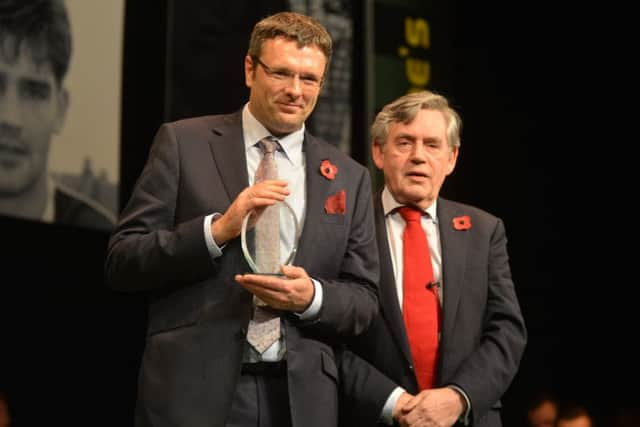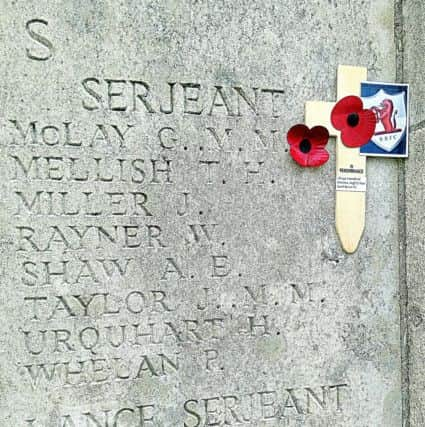George McLay: Hall of Fame induction for a true hero


The honour came on the 100th anniversary of his death.
He was just 28 years old when he was killed while serving with McCrae’s Battalion.
Gordon Brown, former MP and Prime Minister, was present to make the induction, and, in this special article, he looks back on the life of a true hero:


George McLay was Raith Rovers most decorated war hero.
Advertisement
Hide AdAdvertisement
Hide AdHe won one of the most distinguished honours anyone of his rank as Sergeant could win.
He received the Military Medal – the non commissioned officers’ equivalent of the Military Cross – and we must remember him with pride this year.
For 100 years ago this October he died after showing extraordinary courage serving in the battle of Passchendaele.


Trapped in the wire at Poelcapelle, Belgium, during the push at Passchendaele in October 1917 he was shot many times and eventually died after being shot through the head
Advertisement
Hide AdAdvertisement
Hide AdHis friend, Willie McGurther, who was fighting alongside him on that day could not save him.
He gave his life so that Britain could be free. He was just 28.
George McLay was one of seven Kirkcaldy-based players who had joined up with footballers from Hearts and other clubs to form McCrae’s Battalion in the 16th Royal Scots.


Walk down Pratt Street and remember that George McLay lived at number 95 before he signed up for service in the First World War.
Advertisement
Hide AdAdvertisement
Hide AdHe was one of the first seven Raith players to enlist in what was called McCrae’s Battalion - a squad composed of footballers and attached to the Royal Scots.
Big George Mclay was the Raith Rovers centre half –signed from Glencraig Junior not in his teens but as he developed as a player in his early 20s.
He had been born in Crossgates in 1889 , but now the mining family lived in Glencraig.


And before 1914 he was a towering figure as part of the Raith Rovers defence.
Advertisement
Hide AdAdvertisement
Hide AdBetween 1910 and his war service George played 79 times for Raith Rovers either as right half or centre half and scored five goals.
A real leader who did not hesitate to answer the call to war service, he quickly graduated from private to corporal to lance sergeant then to sergeant in only two years and this was the leadership role he held when he died.
He fought at the Somme and survived a slaughter which killed 57,000 on the first day.
That summer of 1916 there was a bright spot – amidst the carnage he played for the Royal Scots in an army tournament and they won 2-1.
Advertisement
Hide AdAdvertisement
Hide AdAnd then at Passchendaele, a year later, he survived the first onslaught when 17,000 died.
But in what was called the battle for Ypres he was shot many times over as he courageously moved forward to try and take a German position.
If he had been more senior he would have won the Military Cross.
But at that time the award for his rank was the Military Medal which he won posthumously.
Why the Military Medal?
Advertisement
Hide AdAdvertisement
Hide AdUntil 1993, the Military Medal (MM) was the decoration given to army personnel below commissioned rank for bravery in battle on land.
He was one of the first to receive it because the medal was established on March 25, 1916.
Over 115,000 awards were made for actions during the First World War.
But he should have received the Military Cross which was awarded to commissioned officers. If he had been a commissioned officer it would have been the MC he received.
No one doubted big George McLay’s outstanding bravery.
Advertisement
Hide AdAdvertisement
Hide AdInstead of a sponsors’ logo on the special strip, Raith Rovers commissioned to commemorate John and his two colleagues Jimmy Todd and Jimmy Scott who died in 1916 the word ‘Remember’ is imprinted on the shirt.
We must continue to remember.
The outstanding courage of George McLay must never be forgotten.